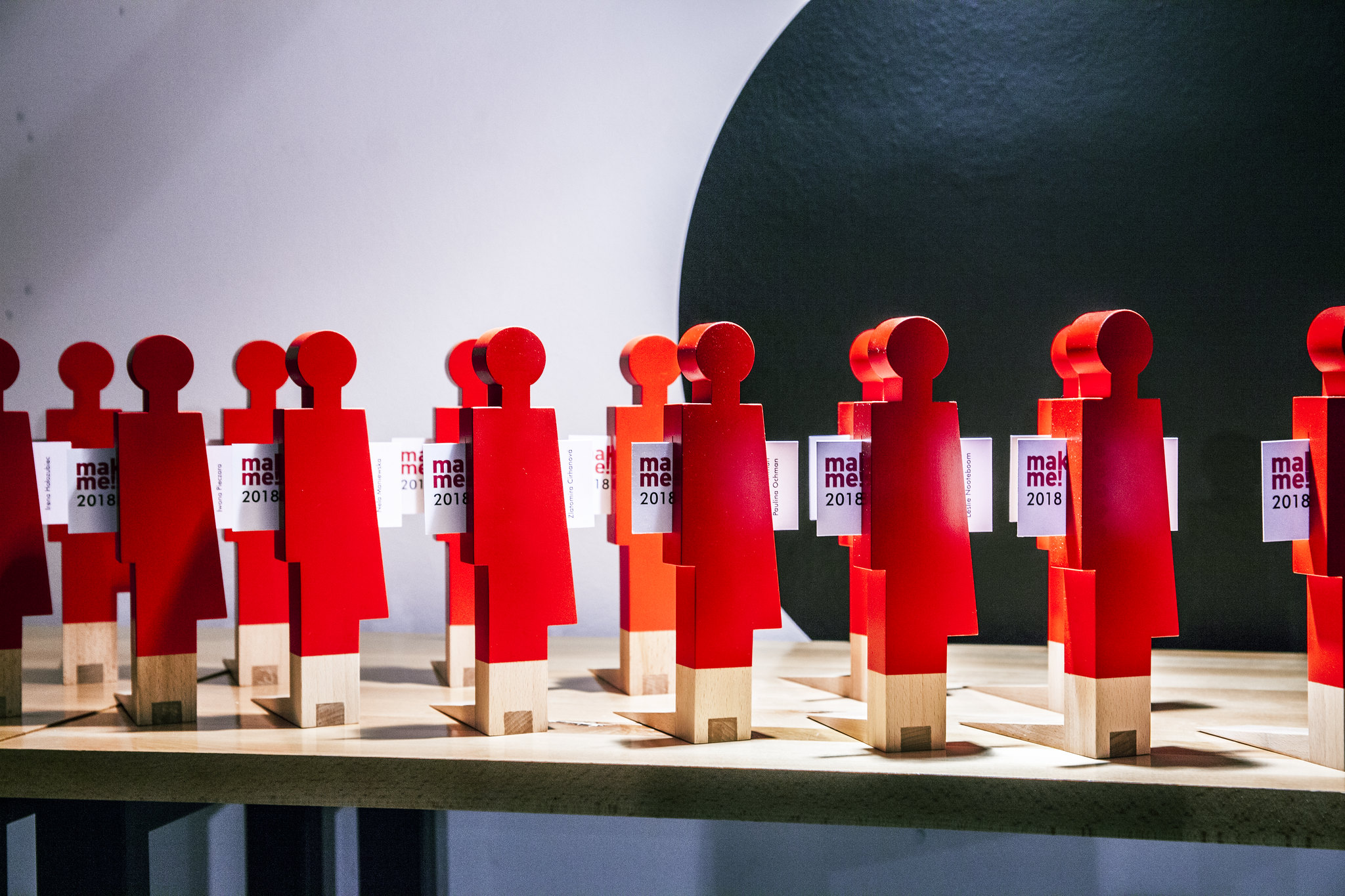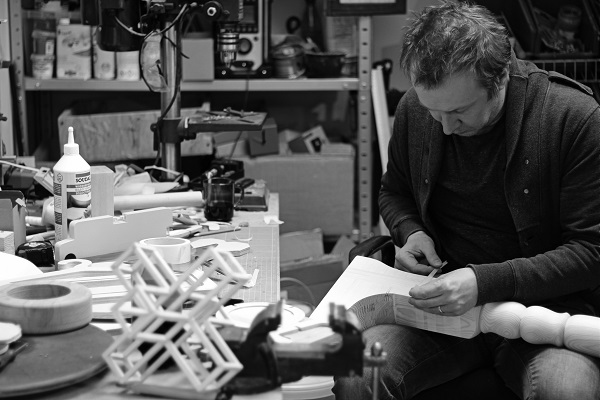Interview with Bartosz Mucha – designer of the make me! statuette
You are an unusual designer, your works refer to different spheres of life and often bring about an existential meaning. You give new, surprising meanings and functions to seemingly typical objects. Taking into account your other projects, was designing the make me! statuette a challenge for you?
That’s true. My designs are often a commentary on the given situation, balancing on the edge of art. Frankly speaking I rarely take on commissioned design assignments. But in this case I managed, I believe, to reach a compromise between being a designer/artist and working with specific requirements of the festival’s organisers. It was easier for me as the make me! competition is directed at designers and rather young ones at that so taking a slightly atypical approach to a statuette came completely naturally.
How did the creative idea behind the design of the statuette come about? What inspired you to represent two sexes?
The story of the differentiation between the two sexes is quite a simple one. I initially only designed a neutral, simplistic shape of the figure, I was a little bit inspired by Otl Aicher’s pictograms. But it looked clearly masculine, just like other masculine statuettes: the Oscar, as well as the Wiktor and the Fryderyk. Following the pictogram connection known, for example, from public toilets, I decided to also design a female version. It turned out I was only sinking in deeper. So the following year a hybrid was created, an abstract one and I think a much better one, because it’s less literal.

make me! statuettes / photo Aleksandra Pawłowska
Contradictions are a characteristic feature of your designs. A statuette, which by many is considered a symbol of distinction and success, also has an additional, more pedestrian and functional meaning. What inspired you to give the statuette an additional functional meaning?
Most of all I wanted the statuette not to be just a “dust-gatherer”. So after the awards ceremony it should have some practical and functional status in the prize-winner’s home. I remembered an anecdote which I had read or heard with regard to what happened to the famous Hollywood Oscar. Allegedly, in case of some artist it ended up as a doorstopper and it inspired me. So I designed the statuette in such a way as to make it clear that it could be used like that. I was also attracted by the perverse character of that idea, i.e. the degradation of the object.
You have also taken part in the make me! competition and your “Clip” design was the winning piece at the 2008 festival. Did it make it easier for you to design the statuette? What do you make of the make me! competition now?
Indeed, I was the first winner of the make me! competition. And I think that the statuette shows the spirit of that winning design, just through the use of beechwood and the combination of two surprising functions in one object. From what I can see the competition is becoming more professional and is gaining prestige over time.
Let’s go back to your creative output, where do you get inspiration for your designs ? Why “Poor Design”?
In the beginning, i.e. around 15 years ago, it was kind of a joke and a way to make fun of the serious world of design. I grew up in the artistic world and used design mainly as a medium. Usability was the result of my actions. The name “Poor” reflected the spirit of my work through the materials used and a non-ornamental, minimalist approach to the form. But I need to finally sort out those poor materials, because I use wood very often, which is an exclusive material after all, not so “Poor”.
What activities are you engaged in at the moment? Are they connected to design? What are your plans for the near future in connection with “Poor Design”?
I’m currently finishing a book, entitled: “Ręka w torboschronie. O obsesyjnej potrzebie tworzenia”, which contains 100 designs created between 2016-18. The works serve just as a starting point for telling stories about the relation between the man and the object. When it’s finished, publication is scheduled for May, I’m going to engage in more artistic, poetic activities. Less obvious ones. That will also take the form of a book.
BARTOSZ MUCHA
Artist, 2D and 3D designer, lecturer, singer. In 2003 Bartosz opened POOREX design studio – a one-man art and design project. When designing, Bartosz uses his unique sense of humour to overcome clichés associated with everyday objects. For five years Bartosz run the “Poor Design” project, promoting the use of widely accessible, cheap materials.







